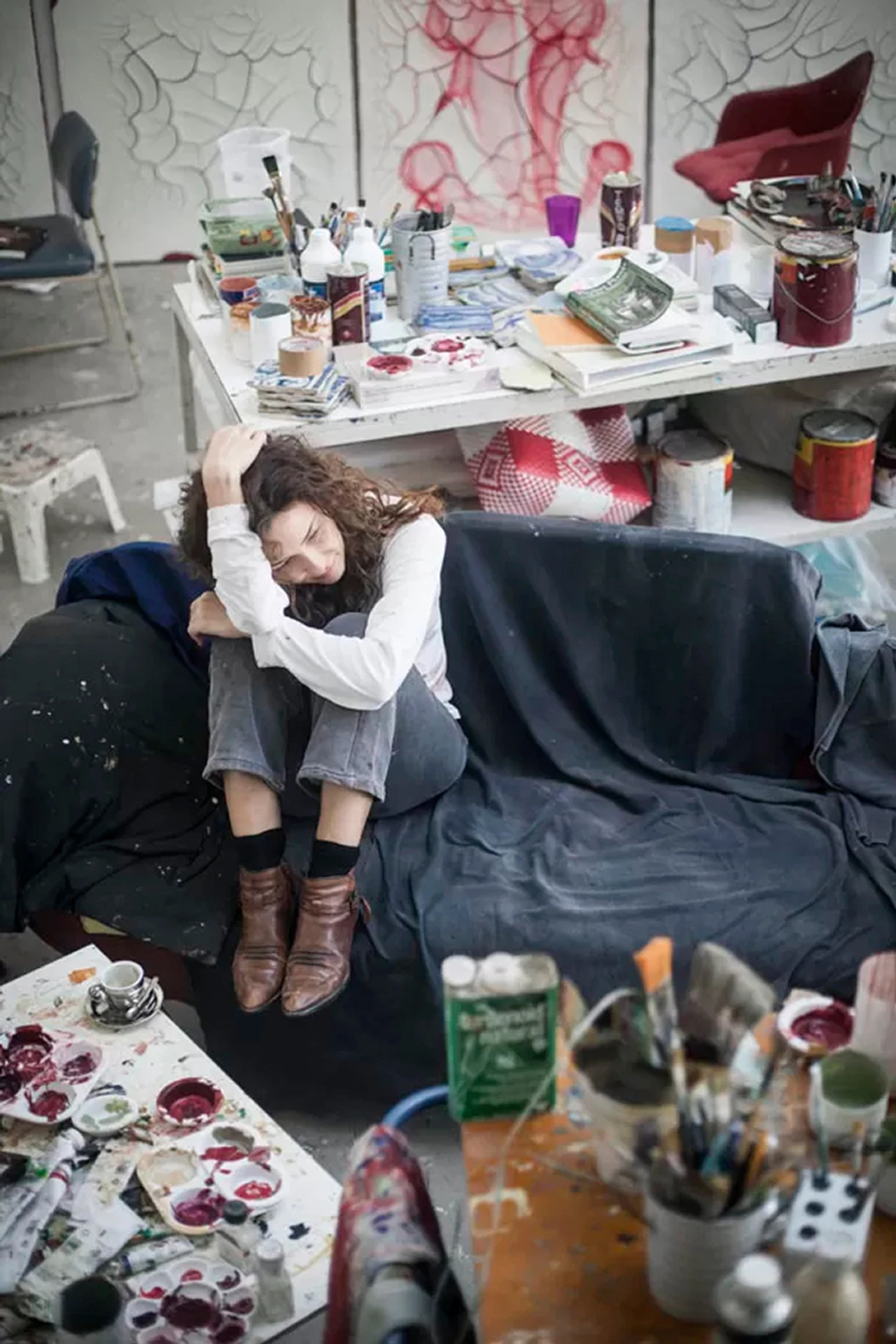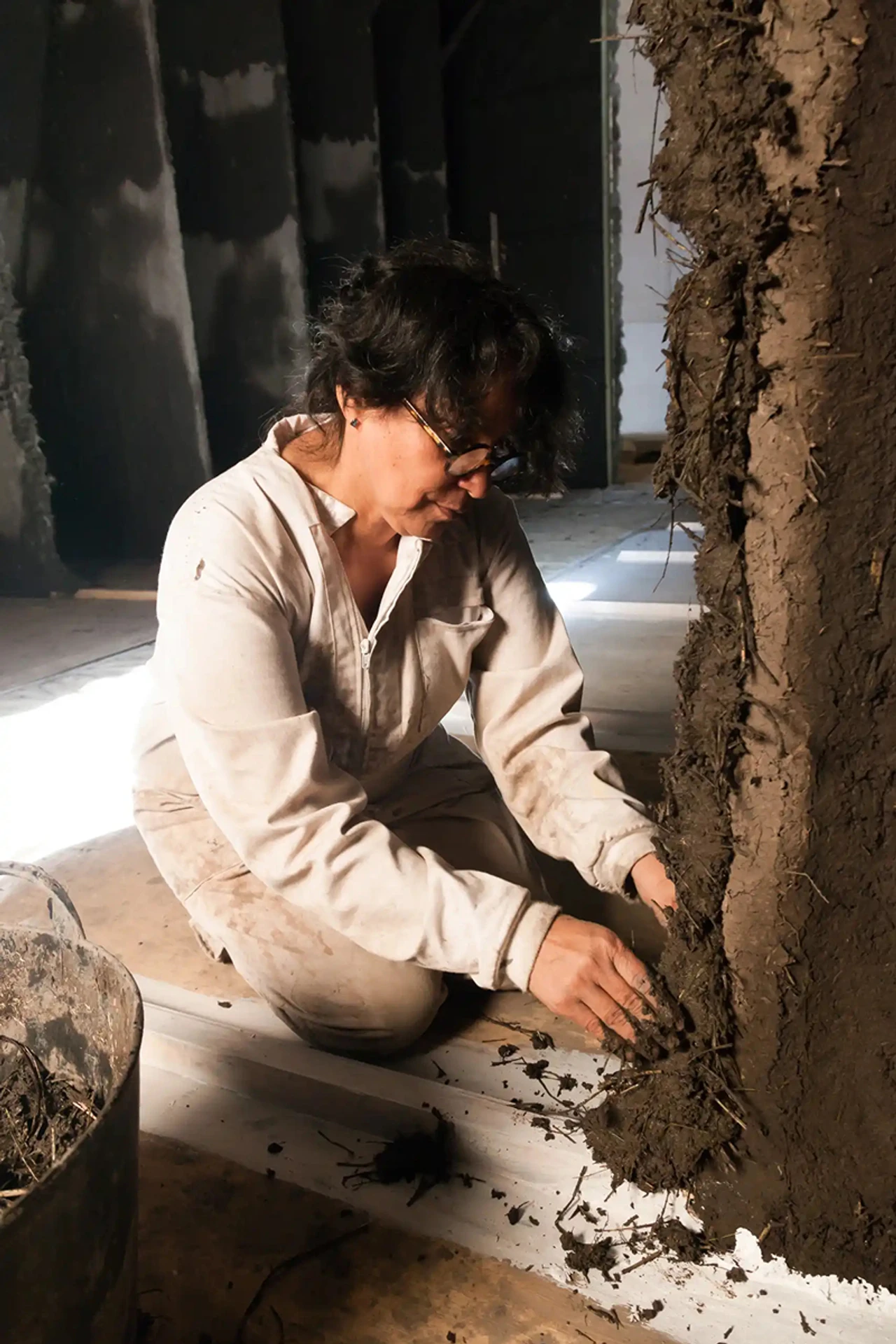破碎的歷史:藝術、土地與療癒

Adriana Varejão in her studio

Delcy Morelos at the Venice Biennale
The “discovery” of South America in the 15th century marked the beginning of a violent colonial process, where vast territories were claimed, and resources extracted for the benefit of European empires. This moment in history, framed by conquest and exploitation, set in motion centuries of violence – against both the land and its people. Yet from this violence arose a quiet but persistent resistance, expressed through the land, the body, and, today, in the works of artists like Delcy Morelos and Adriana Varejão.
Rather than simply remembering the past, Morelos and Varejão use their art as a form of subversion, turning colonial violence into a means of reimagining history. For Varejão, the theory of Anthropophagia becomes a lens through which she reclaims and transforms colonial imprints, engaging with the contradictions of Brazilian identity. For Morelos, her work is an act of retrieval – reconnecting to the ancestral, precolonial knowledge embedded in the earth, transforming it into a sensory and bodily experience that calls us to reflect on our place within this history. Both artists offer a space not of mourning, but of regeneration – a celebration of resilience, renewal, and the power of memory to reshape the future.
The Body, Earth, and Violence
For Delcy Morelos, the earth is both a physical and spiritual medium. Her practice, rooted in indigenous Andean traditions, is an ongoing exploration of memory, race, and the violence imposed on the land and its people. In her work, Morelos uses materials like clay, brick dust, and binder, which are carefully applied to fabric, creating textured, organic surfaces that invite tactile engagement. In Eva (2013), a series of geometric, earthy tones emerge from the canvas, with each piece made from layers of clay, brick dust, and earth-bound pigments. The colours and textures evoke soil, life, and the female body, drawing on Morelos’ belief that the earth embodies the cycles of life, death, and rebirth.
The “discovery” of South America in the 15th century marked the beginning of a violent colonial process, where vast territories were claimed, and resources extracted for the benefit of European empires. This moment in history, framed by conquest and exploitation, set in motion centuries of violence – against both the land and its people. Yet from this violence arose a quiet but persistent resistance, expressed through the land, the body, and, today, in the works of artists like Delcy Morelos and Adriana Varejão.
Rather than simply remembering the past, Morelos and Varejão use their art as a form of subversion, turning colonial violence into a means of reimagining history. For Varejão, the theory of Anthropophagia becomes a lens through which she reclaims and transforms colonial imprints, engaging with the contradictions of Brazilian identity. For Morelos, her work is an act of retrieval – reconnecting to the ancestral, precolonial knowledge embedded in the earth, transforming it into a sensory and bodily experience that calls us to reflect on our place within this history. Both artists offer a space not of mourning, but of regeneration – a celebration of resilience, renewal, and the power of memory to reshape the future.
The Body, Earth, and Violence
For Delcy Morelos, the earth is both a physical and spiritual medium. Her practice, rooted in indigenous Andean traditions, is an ongoing exploration of memory, race, and the violence imposed on the land and its people. In her work, Morelos uses materials like clay, brick dust, and binder, which are carefully applied to fabric, creating textured, organic surfaces that invite tactile engagement. In Eva (2013), a series of geometric, earthy tones emerge from the canvas, with each piece made from layers of clay, brick dust, and earth-bound pigments. The colours and textures evoke soil, life, and the female body, drawing on Morelos’ belief that the earth embodies the cycles of life, death, and rebirth.
Delcy Morales, Eva, 2013
The earth holds in its womb the very cycles of life, death, and rebirth, and it is a feminine deity.Delcy Morales
The works’ earth tones – rich reds, ochres, and browns – resonate deeply with Morelos’ exploration of the body, particularly its maternal and ancestral aspects. The tactile nature of Eva evokes a sense of the human body as both vessel and land, nurturing yet capable of suffering. The “red” of the earth, which Morelos often associates with blood, becomes a powerful metaphor for both violence and life force, suggesting a sacred and cyclical relationship between the body and the land.
In her work, Morelos invites viewers to physically engage with the earth, turning art into a meditative, spiritual act that awakens emotions and thoughts connected to ancestral traditions and contemporary life.
The Fractured Body and Colonial History
In contrast to Morelos’ earthy installations, Adriana Varejão’s work engages with the historical and psychological fractures caused by colonialism. Varejão’s Prata Preta II (2022–2024) exemplifies her signature approach to materiality: a thick, viscous layer of plaster is applied to canvas, allowed to dry naturally over time, and then cracked deliberately. This process results in a powerful visual metaphor for both cultural decay and the possibilities for renewal. The cracks that run through Prata Preta II reveal an underlayer of raw, terracotta-colored material, which contrasts with the deep black surface above. The title Prata Preta (“Black Silver”) references Brazil’s brutal history of wealth extraction through the mining of silver – an industry founded on exploitation and colonial violence.
Varejão’s work explores the tension between beauty and destruction, creation and decay. The fractured surface of Prata Preta II evokes geological fissures, as though the earth itself is revealing its hidden layers, inviting us to confront both its history and its ongoing transformations. The monochrome surface of the painting, though deceptively simple, is rich with meaning, suggesting the psychological rupture created by centuries of exploitation and the wounds that remain unhealed in Brazilian society.
Adriana Varejão, Prata Preta II, 2022–2024
Caption three
Varejão’s use of the azulejo, a traditional Portuguese decorative tile, is central to her exploration of colonialism and cultural fusion. By applying this ancient form to a contemporary canvas, Varejão underscores the enduring impact of colonization on Brazilian art and culture. The act of cracking the surface – exposing the rawness beneath – speaks to the fissures in Brazilian history, where cultural identities were forcibly reshaped and syncretised with transnational influence stretching all the way to China by way of the Portuguese trade.
The cracked tile becomes a metaphor for both material decay and the psychological ruptures left by colonialism.Adriana Varejão
Though Delcy Morelos and Adriana Varejão come from different cultural contexts, their works resonate with shared themes of displacement, violence, and the body as a site of both trauma and healing. Morelos’ Eva and Varejão’s Prata Preta II both use materiality to evoke the tension between destruction and creation. For Morelos, the earth is a living entity that holds the power of renewal; for Varejão, the fractured surfaces of azulejos are metaphors for cultural decay and the potential for regeneration.
Both artists engage viewers in an intimate relationship with their works – whether through the tactile, immersive experience of Morelos’ installations or the visual confrontation with history in Varejão’s cracked surfaces. Their practices often expand into large-scale, monumental installations that are time-consuming in their creation, enveloping the viewer's body.
Delcy Morelos, Earthly Paradise, 2022
Morelos’ immersive installation Earthly Paradise (2022), displayed at the Venice Biennale, invited viewers to walk through a horizon of black mixed soil, scented and sweetened with fragrant substances like cinnamon and cloves. The work evoked both the nurturing and destructive forces of the earth, inviting the viewer into a space that was simultaneously sacred and primordial. Similarly, Morelos’ installation El lugar del alma (2022) at the Museo Moderno de Buenos Aires, where visitors descended into a 10-meter deep space filled with earth and the smell of spices, created a sensory and spiritual experience that invited reflection and engagement with the cycles of life, death, and rebirth. These works physically and metaphorically envelop the body, making the viewer's experience of the installation one of immersion and transformation.
Adriana Varejão, Celacanto provoca maremoto, 2004–2008
Varejão’s own monumental works, such as her installation Celacanto provoca maremoto at Inhotim, further highlight her use of large-scale, immersive environments to explore colonial and postcolonial themes. This installation, a vast space with fragmented surfaces that blend azulejos and body-like forms, combines painting, sculpture, and architecture. The installation evokes themes of decay, rupture, and renewal, inviting viewers to move through a space where the body, the earth, and colonial history intertwine. The use of azulejos in the space, with their glossy yet fractured surfaces, suggests both the beauty and violence inherent in cultural history and memory. The viewer, walking through this environment, becomes part of the installation, confronting the past while experiencing the potential for transformation and healing.





